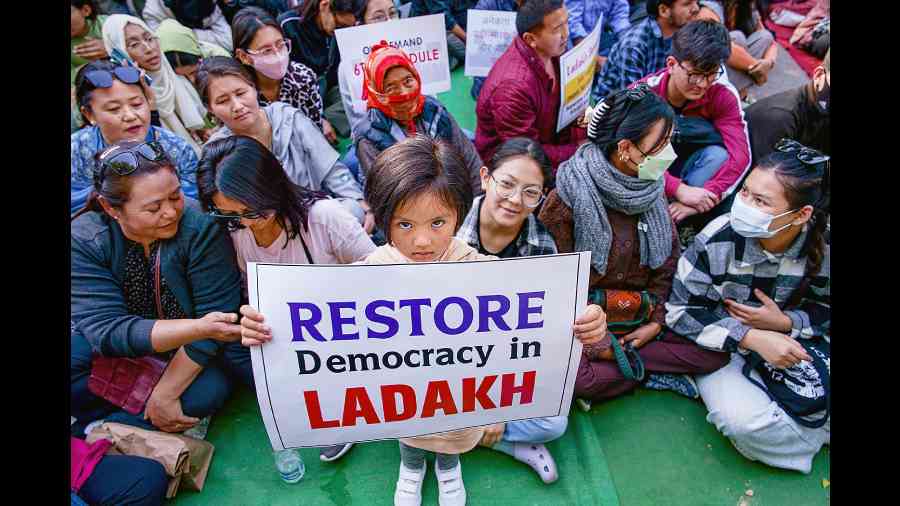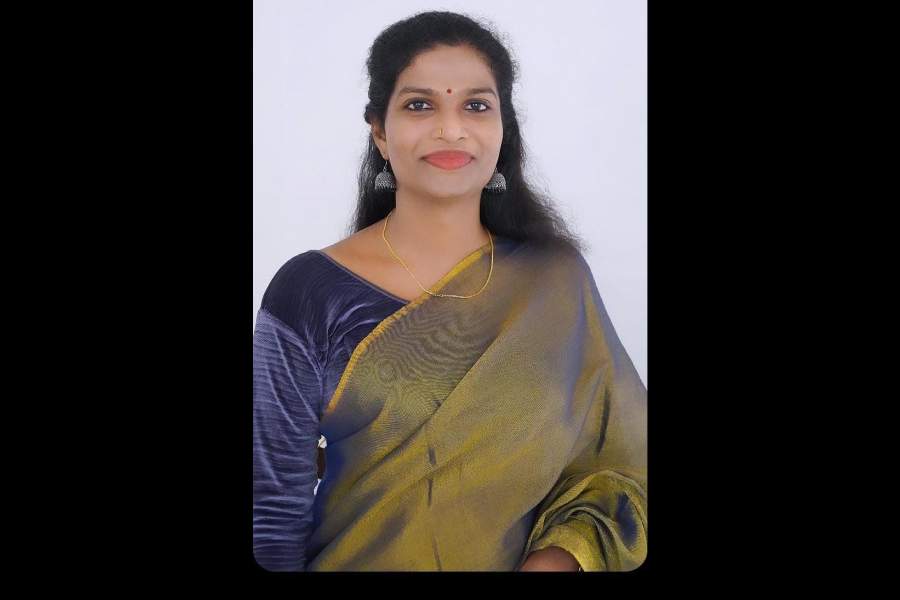Situated along Chinese-controlled territory and Pakistan-administrated Gilgit Baltistan, the cold and arid desert of Ladakh has been on the boil politically for over three years with far-reaching ramifications. Ladakh is nearly 46.4% Muslim, 39.7% Buddhist and 12.1% Hindu. It comprises two districts — Kargil, via Gilgit-Baltistan, which falls on the old route of South Asia’s connectivity with Central Asia, and the eastern part of Leh, which faces China-controlled Tibet with whom it shares the same form of Buddhism.
Ladakh, with a population of little over three lakh, has repeatedly come under international spotlight as a result of territorial contestations among the three nuclear-armed armies of India, China and Pakistan. In 1999, Kargil saw incursions by the Pakistani army. A daredevil offensive by the Indian army, coupled with the intervention by the former president of the United States of America, Bill Clinton, led to the withdrawal of the Pakistani army from Indian territory. In 2020, the Galwan Valley saw an unprecedented Indo-Chinese contestation and, notwithstanding several diplomatic and military parleys, there is still a massive deployment of the Indian and Chinese militaries along the line of actual control.
The political instability that has wrecked the region in the background of these developments has failed to get adequate public attention. More importantly, irrespective of which political party is in power, Ladakh as a case study and its ongoing collective political agitation highlight the fact that post-colonial States find it difficult to shed colonial structures and, thus, trigger inadvertent bureaucratic responses that are unpopular and unsustainable. It also demonstrates the limitations of popular movements that are rooted in divisive politics.
To make sense of all this, the pre- and post-August 5, 2019 developments have to be put in a historical perspective. Ladakh became a Union territory on August 5, 2019 after its separation from Jammu and Kashmir. On the day Ladakh attained its UT status, there were protests in Kargil as people in the district demanded that the capital of the new UT should rotate between Leh and Kargil. Historically, Kargil has been opposed to the separation of Ladakh from the Muslimmajority J&K. The reactions in Leh and Kargil were, therefore, along expected lines. But what followed in both districts was more interesting.
The establishment of the UT of Ladakh was in concurrence with the age-old demand of Leh, a demand opposed by Kargil. Leh’s demand for UT status started in 1947 as the old statements of the former parliamentarian and religious leader, Kushok Bakula Rinpoche, indicate. On October 10, 1993, the then Central government had announced elected autonomous hill council status for Leh as J&K was under governor’s rule. Ignorance about the region at the highest levels of decision-making can be ascertained from the fact that the former prime minister, P.V. Narasimha Rao, had to be told by a public intellectual that the council’s status is limited to Ladakh’s Leh district. Kargil, a Shia Muslim-majority district of Ladakh, which had originally opposed the demand, got a similar council in 2003 under the former chief minister, Mufti Mohammad Sayeed.
In 2019, it didn’t take too long for the initial excitement over the new status of UT to dampen in Leh. Lack of clarity over the powers of the elected councils of Leh and Kargil in the new constitutional arrangement proved to be a trigger. In the new arrangement, the unelected lieutenant-governor is the de-facto head of the government and head of State. Out of the nearly Rs 6,000 crore budget allocated annually for Ladakh from New Delhi, approximately 9% has to be shared by the two councils. The rest is under the lieutenant-governor’s administration. The working season in the region is less than six months and the principle of rolling over of the unspent funds was followed before August 5, 2019. Now the unspent funds lapse. There is also an absence of the mechanism of institutional coordination between the administration of the lieutenant-governor and the elected council with the senior bureaucrats reporting to the former. Meanwhile, Kargil’s political leadership has reconciled itself to the separation from J&K, something that it opposed vociferously in the past, and is now looking at the future.
At the same time, one cannot miss the positives. The political leadership in both districts are now together on one platform, shedding the seven-decade-old politics of religious polarisation between Leh and Kargil which had often become ugly and violent. The two communities agreed to resolve the over five-decade-old religious dispute over the construction of a Buddhist temple in Kargil. One of the forceful voices for sanity and unity is that of Sajjad Hussain, a young political activist, who was runners-up in the 2019 Ladakh parliamentary election as an independent candidate. He told this author that a divided Ladakh impeded the region’s progress and added “our generation cannot afford to make the same mistake of previous generations in a challenging environment with unprecedented challenges.”
In terms of tangible political goals, the leadership in Leh and Kargil wants an empowered Ladakh with a possible statehood status along with the restoration of the Permanent Resident Certificate to protect their identity. One of the critical aspects of Article 370 was the provision of PRC that was given to people whose ancestors had lived in J&K for at least 10 years before May 14, 1954. Those with PRC could buy land and get local jobs. There is also a demand for the application of a Northeast-centric Sixth Schedule of the Indian Constitution for Ladakh. The Sixth Schedule was primarily designed for tribal areas in Assam, Meghalaya, Tripura and Mizoram where autonomous district and regional councils are endowed with legislative, executive, judicial and financial powers. The viability of these demands may or may not be feasible, but this rare moment of unity between Leh and Kargil is hard to ignore.
The new political trends in Ladakh take place in the context of global warming and other major climatic changes, with glaciers that used to abound in the cold desert melting fast. This has direct implications for the low-lying, densely-populated Indus water basin. This challenge, coupled with India and China’s continued military contestation, is acute. The grievances of Ladakh require a more grounded and compassionate understanding. The seven-decade passivity is unsustainable given the new political, ecological and strategic environment.
Luv Puri is the author of Across the LoC











